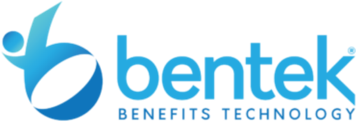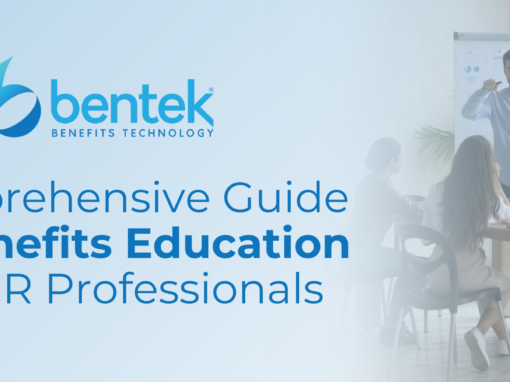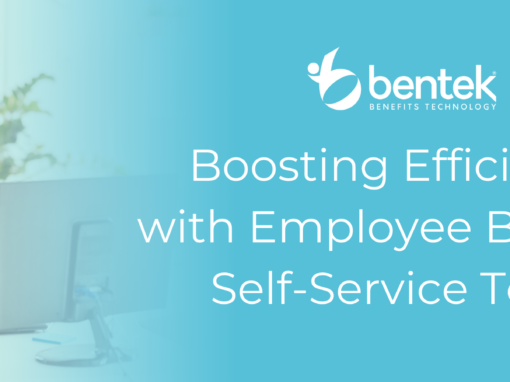Have you ever pondered the profound impact that effective employee compensation management has on the success and sustainability of organizations, particularly in the public sector? With an ever-evolving workforce that demands fairness, transparency, and competitiveness in compensation, the challenge for HR departments escalates.
According to HiBob, compensation management is not just about numbers; it’s a strategic process that involves managing, analyzing, and determining the salary, incentives, and benefits each employee receives. In today’s landscape, where market competitiveness, employee expectations, and regulatory requirements shift like the tides, mastering this aspect of HR is non-negotiable.
This article unfolds the intricacies of employee compensation management in the public sector, highlights the pivotal role of benefits management platforms, and navigates through the changing currents of employee expectations and regulatory landscapes.
Introduction
Employee compensation management plays a pivotal role in the public sector’s operational framework, embodying the strategic process of managing, analyzing, and determining the salary, incentives, and benefits each employee receives. This comprehensive approach, as highlighted by HiBob, ensures not only the fulfillment of employees’ financial and non-financial needs but also aligns with organizational goals and regulatory guidelines. The emergence of benefits management platforms like Bentek has significantly lightened the administrative load, providing a seamless, efficient pathway to handle the complexities of compensation management. These platforms offer an invaluable tool in the arsenal of HR departments, aiming to enhance accuracy, transparency, and employee satisfaction.
The evolving landscape of employee compensation, influenced by market competitiveness, employee expectations, and regulatory requirements, underscores the need for a dynamic, responsive approach to compensation management. Today’s employees seek more than just a paycheck; they desire comprehensive compensation packages that reflect their value, encourage their growth, and provide security. This shift necessitates a reevaluation of traditional compensation strategies, with an emphasis on flexibility, equity, and inclusivity. As we delve deeper into the realm of employee compensation management, we uncover the challenges, strategies, and technological solutions shaping the future of how public sector entities compensate their workforce. How does your organization navigate the complexities of employee compensation management, and are you leveraging the full potential of benefits management platforms like Bentek® to streamline your processes?
Understanding Employee Compensation in the Public Sector
The public sector stands as a unique entity in the realm of employee compensation management. Unlike its private counterparts, the public sector faces distinct challenges and considerations shaped by a blend of service mandate, public accountability, and budgetary constraints. This section delves into the multifaceted components of employee compensation in the public sector, emphasizing salary, benefits, incentives, and the critical role of equity and benefits management platforms in navigating these waters.
Components of Employee Compensation
- Salary: The bedrock of employee compensation, where public sector entities must balance competitive wages with budgetary limitations.
- Benefits: Encompass a wide array including health insurance, retirement plans, and paid leave, which are essential for attracting and retaining talent.
- Incentives: As noted by Eqvista, include bonuses, profit sharing, and stock options, though the latter may be less common in public settings, they represent a growing interest in aligning employee performance with organizational success.
The challenge lies not just in offering these components but in structuring them in a way that meets regulatory compliance, budgetary constraints, and employee expectations.
The Importance of Equity in Compensation
Equity in compensation ensures that employees receive fair treatment in pay, benefits, and opportunities for incentives. This principle is vital in the public sector to maintain trust and morale among employees. Bentek and similar platforms provide clarity and ease in managing these components, ensuring that equity is not just a goal but a measurable outcome. They allow for:
- Transparent tracking and reporting of compensation packages.
- Equal access to incentives and benefits for all employees.
- Simplified management of complex compensation structures.
Direct, Indirect, and Non-Monetary Compensation
Deel’s insights into compensation types highlight the significance of understanding and implementing direct (salary, wages), indirect (benefits, insurance), and non-monetary (work-life balance, career advancement opportunities) compensation. In public sector settings, where financial incentives may be capped by budgetary limits, non-monetary compensation becomes a critical tool for motivation and retention.
Navigating Government Regulations
The impact of government regulations on compensation strategies in the public sector cannot be overstated. From wage laws to benefits mandates, these regulations shape the framework within which compensation management operates. Here, technology solutions play a pivotal role in aiding compliance and administration. They offer:
- Automated updates on regulatory changes to ensure compliance.
- Streamlined reporting processes for government audits.
- Enhanced data security to protect employee information.
The Role of Technology Solutions
Platforms like Bentek revolutionize compensation management in the public sector by offering tools that simplify complexity and ensure compliance. These technologies serve as bridges over the traditional gaps between policy, practice, and employee satisfaction. They empower HR departments with:
- Real-time access to compensation data.
- Tools for efficient management of benefits and incentives.
- Capabilities for transparent communication with employees regarding their compensation packages.
By integrating these technology solutions, public sector organizations can navigate the intricate landscape of employee compensation management more effectively. The aim is not merely to manage compensation but to do so in a way that aligns with organizational values, meets regulatory requirements, and fulfills employee expectations. This holistic approach to compensation management underscores the evolving nature of HR in the public sector, where innovation and adaptability become key drivers of success.
Strategic Compensation Planning and Implementation
The strategic aspect of compensation planning within the public sector requires a nuanced approach, given its unique challenges and the critical role HR functions play in shaping organizational success. Effective compensation planning in this arena not only helps attract, retain, and motivate employees but also ensures alignment with the organization’s mission and compliance with governmental regulations.
Purpose of Compensation Functions in HR
- Attracting Quality Employees: Competitive compensation packages are essential for attracting talent. Public sector organizations must balance fiscal responsibility with the need to offer attractive packages.
- Retaining Employees: Beyond attracting talent, compensation plays a crucial role in retaining employees. Ensuring fair and competitive compensation reduces turnover rates.
- Motivating Employees: Strategic compensation directly impacts employee motivation. Incentives and benefits are key tools for encouraging performance and fostering commitment to public service.
The Texas Association of School Boards (TASB) underscores the importance of strategic compensation planning in HR, highlighting its role not only in operational excellence but also in fulfilling the broader mission of public sector organizations.
Implementing Compensation Management Systems
Implementing an effective compensation management system involves several key steps, tailored to address the specific needs of hourly and salaried employees alike:
- Hourly Employees: Compensation plans for these employees typically focus on wage rates, overtime calculations, and shift differentials. Ensuring compliance with labor regulations while providing fair and competitive wages is paramount.
- Salaried Employees: For salaried staff, plans might include base salary, performance bonuses, and long-term incentives. The challenge lies in designing packages that are both equitable and aligned with organizational goals.
Software solutions like Bentek play a crucial role in this process, offering tools that enable administrators to manage compensation packages efficiently. These platforms provide a comprehensive view of each employee’s compensation, facilitating better decision-making and strategic alignment.
Budget Allocation, Priorities Setting, and Goals Alignment
The financial planning aspect of compensation management requires meticulous attention to detail and strategic foresight:
- Budget Allocation: Determining the overall budget for employee compensation and how it’s distributed among different categories (salary, benefits, incentives) is the first step in the planning process.
- Setting Priorities: Priorities vary among public sector organizations, but often, they must balance the need to remain competitive with the imperative of fiscal responsibility. Deciding which roles or departments are critical can guide the allocation process.
- Aligning Goals: Compensation planning should reflect the organization’s broader objectives. Whether it’s improving public services, enhancing operational efficiency, or achieving specific project outcomes, compensation strategies should support these goals.
Public sector organizations face the additional challenge of doing more with less. Budget constraints, coupled with rising expectations from employees and the public, necessitate innovative approaches to compensation management. By leveraging technology and adopting strategic planning practices, these entities can navigate the complexities of compensation management, ensuring their ability to serve the public effectively while also being an employer of choice.
Leveraging Technology for Enhanced Compensation Management
The dynamic landscape of public sector compensation management is undergoing a significant transformation, driven by technological advancements. Platforms like Bentek have been at the forefront of this change, streamlining the once cumbersome processes associated with employee benefits management. Additionally, the introduction of Pequity’s Total Compensation Overview and Employee Portal marks a pivotal development in how compensation data is accessed, analyzed, and utilized for strategic decision-making.
Benefits of Integrating Advanced Platforms
- Improved Administrative Efficiency: Automation of compensation management tasks significantly reduces the administrative burden on HR departments, allowing them to focus on strategic initiatives rather than operational details.
- Better Financial Planning for Employees: With specialized platforms, employees gain insights into their total compensation package, including future earnings from vested shares, which supports better personal financial planning.
- Enhanced Negotiation Capabilities: Access to comprehensive compensation data empowers both employees and managers during salary and benefits negotiations, ensuring fair and competitive compensation packages.
Future Outlook of Compensation Management in the Public Sector
The ongoing integration of technology into compensation management heralds a new era of efficiency, transparency, and strategic alignment in the public sector. The capabilities of advanced technology platforms not only address current challenges but also pave the way for future innovations in compensation management. As the public sector continues to evolve, the role of technology in facilitating effective compensation strategies becomes increasingly indispensable. This continuous innovation is essential for meeting the changing expectations of the workforce and ensuring that public sector organizations remain competitive employers in the market. The focus on developing more intuitive, user-friendly platforms that can handle the complexities of public sector compensation in a transparent and efficient manner will likely dominate the future landscape of compensation management.
Want to learn more about what Bentek can do for you? Click Here!




